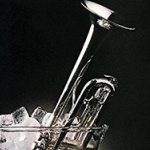WindWorks Trumpet Academy › Forums › WindWorks › Car Practicing
- This topic has 4 replies, 4 voices, and was last updated 3 years, 9 months ago by
 firestudio6.
firestudio6.
-
AuthorPosts
-
-
27 September 2020 at 4:34 pm #61805
 firestudio6Participant
firestudio6ParticipantI’ve recently started the course and am having a great time with it. I will soon be taking a 3 day drive across the country in my car (alone). I’ve buzzed my mouthpiece on long trips in the past, but as it relates to Windworks, I’m not sure mouthpiece buzzing would be a good idea. Since I will have about 10 uninterrupted hours each day, I was wondering if there is anything I could do in the car with all of that time that will help me solidify the concepts in this this course?
-
28 September 2020 at 7:06 am #61858
chris.peile
ParticipantI highly recommend not buzzing in the car! A long time ago I was doing exactly that, and started to slightly black out from lack of air. Not the best scenario!
There is a bit of commentary of ??? who became known as Tuku, who practised his double tounging away from the instrument. Breathing and relaxation is also a good one to practice (backswing, release, etc).
Cheers,
Chris -
30 September 2020 at 8:03 am #62050
 Ronald CarsonParticipant
Ronald CarsonParticipantDownload podcasts from the videos and listen to them.
Learning to recognize negative tension is the first step to eliminating it. The best way to improve your playing is to know how you want to play and what it feels like.
One
Stand or sit up straight, take a comfortable breath, and with no active engagement from the abdominal muscles, hum or sing a comfortable tone. Experiment by trying any/all of these options:lowering the jaw
pushing then releasing the airflow by engaging and disengaging the abdominal muscles
opening and closing the throat
raising and lowering the head
let the shoulders drop loosely
loosen the chest and find optimum vibration and purity of resonanceTwo
Put your bent finger between your teeth and take a slow, soft breath. You cannot do too much of this tricky exercise. It is both a reminder to stay free and open before you play or a way to “Check-In” at the end of an exercise to see if you have closed up and tightened whilst playing; an easy and very effective little trick when practicing.Three
Practice the backswing. Practice creating the aperture (ahh-ooh), and passive reduction exercises.Four
Learn to recognize the inward, horizontal movement of the Aperture Corners. Add to this an understanding of the role of the tongue and your upper register will improve dramatically.
Place the index and middle finger extended like a closed peace sign. Put the two fingers, into the mouth with the fingers pointing into the mouth. Index fingers side on the bottom and middle finger under the top teeth. Say aah-ooh and bring the aperture corners toward the fingers. Repeat.
Put the little finger in the middle of the lips and grip it with to corners, not the top and bottom of the lips. Let the lips roll out do not smile.Stay safe and alert. Don’t let any of these exercises distract your driving.
-
2 October 2020 at 1:46 am #62288
johnelwood
ParticipantI agree that buzzing isn’t probably a great idea as it probably will more likely have negative consequences than positive ones. Buzzing is harder on our lips than playing is and should be minimized for only a few minutes each day, especially if you haven’t done it before. Also, in the beginning, the whole purpose is to loosen things up, relax, play less tightly, etc. Buzzing will, in my opinion, result in the opposite result in most players at the beginning unless you happen to be very lucky.
I spent a lot of time commuting pre-COVID and listened to a lot of YouTube videos by Greg and others in the car and there are some breathing and other exercises he talks through that our doable during listening to those videos.
So much of this is MENTAL, as is playing in general. Plenty to do without the horn. What we’re really trying to do is re-wire our minds and how our body responds instinctively to playing.
Spending time away from the horn is helpful for that.
Playing above the staff doesn’t require physical strength as much as it requires coordination and control over our preconceived notions / desires to tense up and apply pressure where it’s not needed, where it doesn’t help us.
Tension is required in the aperture corners, surrounding the embouchure / aperture–not within the lip muscles forming the aperture itself.
Yesterday, I found myself in the car visualizing playing a G above the staff and using articulations–forming an embouchure and the aperture I envision necessary for that note, using different articulations as I was releasing air. I thought this would be helpful for me as I was finding that my consistency wasn’t good when I was using different articulations, I think I have a tendency to lose focus and tighten up as I begin to articulate rather than keep things open, relaxed, resonant as much as possible.
I think Greg has a video in the course called “the secret lesson” or something like that which he talks about spending time away from the horn in a productive way.
Bon voyage / good luck.
-
13 October 2020 at 2:06 pm #63220
 firestudio6Participant
firestudio6ParticipantThank you all! Great advice from everyone.
-
-
AuthorPosts
- You must be logged in to reply to this topic.
Recent topics
-
Question of Curiosity – To Teeth or Not To Teeth
by
clawsonk123
1 month, 3 weeks ago -
1.O / 2.0 routine
by
jice.gif
2 months, 3 weeks ago -
Abdominal surgery and time off the trumpet
by
DQ
9 months, 3 weeks ago -
Allegro or Presto Practice Routine
by
djm297
10 months, 2 weeks ago -
Tongue lock – Throat lock
by
Ivo Carrabs
11 months, 1 week ago
